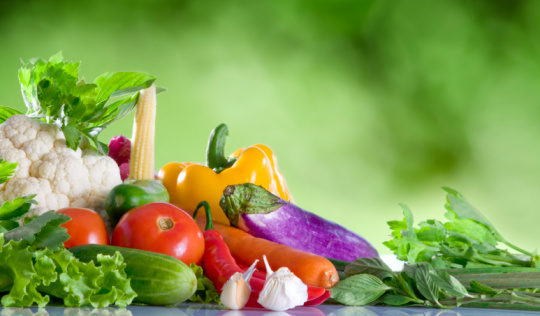The raw foods category has enjoyed popularity in the natural products industry for quite some time, but some of its most prominent companies are coming together to take it in an exciting new direction. Since early last year, raw foods companies have come together to try and create a set of uniform standards for raw foods, culminating in an over 30-person strong meeting behind the scenes at Expo West.
According to Blessing Horowytz, vice president of innovation of Alive and Radiant Foods, this journey came about in February 2014, in an ordinary annual meeting her company has with a major natural national grocer. At the time, she notes that while there were certain aspects to the definition of raw that were agreed upon, “there wasn’t a consistency in the entire conversation.” She explains that part of the reason behind this was due to the influx of new raw food companies springing up as the category become popular. While the expanded interest is positive, a side effect is that when dealing with specific standards, say—for a certain ingredient, “there was a bit of a grey area,” she explains .In the course of the meeting, she decided to pull together other raw foods companies and begin work on a set of standards, in hope of finding a core set of values for raw foods and applying them to the entire category. Several long-time fixtures like Go Raw, Wonderfully Raw, Rhythm Superfoods, Hail Merry and Brad's Raw Foods would soon join in to offer their input and support for the idea of a set raw foods standard. Along with these standards, a raw foods trade association is also in the planning stages, to help market and educate the public on the benefits of plant-based eating.
With any undertaking of this magnitude, difficulties are bound to be encountered, though, and Horowytz remarked that during the course of this long and arduous process, “even though everyone had their own interests at stake, we had to set those interests aside for to build a bigger picture.” This bigger picture emphasizes three main parameters. First, and most important, is safety. Using rigid standards and new mechanisms to ensure any harmful bacteria is killed, and making sure that consumers can be confident that they are killed, is paramount. Along with this is bringing manufacturing facilities to even higher levels of safety and transparency. The second is keeping foods minimally processed, and the third tenet of these standards is ensuring that the raw foods are the cleanest and most nutrient-dense possible. One of the mechanisms being used to solidify and test these standards is called Cytosolve, a computational platform for integration of molecular pathway models created by Shiva Ayyadurai, known to some for developing and coining the term email. Commonly used for supplements and nutraceuticals, Horowytz says that this process is currently being used on recipes from the participating companies to see how high of a temperature can be used during manufacturing while still retaining maximum bioavailability. The aim here is to ensure maximum safety as well as “a strong scientific base for these standards people can turn to.” As of right now, these standards are strictly intended for the grocery category, but Horowytz says that this could apply to supplements in the future, but not until the certification process and the trade organization alongside it have fully come to fruition.
Considering the way that this came about, it’s fitting that the same major natural grocer present for the genesis of this concept has taken a role in the development of these standards as well, serving as a “stakeholder,” according to Horowytz. She explains that they have been a great source of advice throughout this process, taking a collaborative role in coming up with some of these ideas. This spirit of collaboration carried to the Expo West meeting this year, where Horowytz and Ayyadurai explained some of what had already taken place, pushing the message that “to build this category, we can’t afford to have even one company go astray.” People who were with this undertaking from the beginning shared input and ideas with those completely new to the concept, but one final aim was clear: to help people be healthier and thrive. Perhaps the best way to sum up the goal of these new standards and the trade association behind them is the “rebranding” of sorts the group has in mind for raw standards, with the new name R.A.W., standing for Real, Alive and Whole. A formal announcement of the new standards is planned for the coming months.
Published in WholeFoods Magazine, July 2015 (online 5/20/2015)










